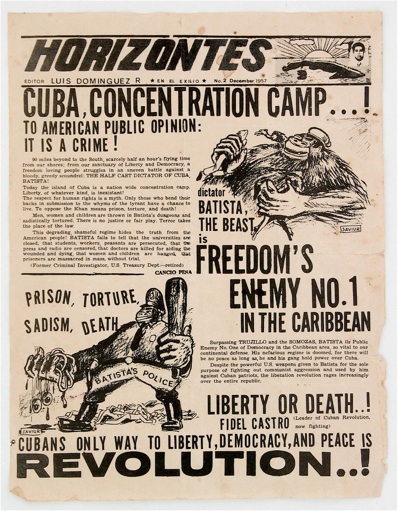Cuban Presidents in “free Cuba” 1898-1960 Before Castro
A Cigar History Museum Exclusive
© Tony Hyman
New material added November 16, 2010

Cuban Presidents in “free Cuba” 1898-1960 Before Castro
A Cigar History Museum Exclusive
© Tony Hyman
New material added November 16, 2010

This 1957 flyer paints an ugly picture of Cuba under Batista, whom Castro soon thereafter unseated. Batista was not Cuba’s only corrupt leader. Similar complaints could have been leveled against nearly every Cuban government since the Spanish arrived.
A popular misconception is that after the U.S. invaded and kicked the Spanish out in 1898, “free” Cuba became a paradise. True, the Cuban people were friendly, the weather hot and sticky, the rum, cigars, gambling and prostitutes were unexcelled for tourists, but the average Cuban lived as his ancestors had lived for centuries... amidst corruption and graft rivaling any government in history.
There is no shortage of books on Cuban history. It’s my intent with this modest summary to encourage you to read a few, avoiding bitter polemics and the U.S. government’s propaganda, and focussing on the many scholarly works that exist.

“No part of Cuba escaped the ravages of the war with Spain that ended in 1898. From the eastern mountains across the central plains to the western valleys, the scene of desolation and devastation was the same. It was a brutal conflict in which the opposing armies seemed determined more to punish the land than prosecute the war.” [ Bethell: Cuba, A Short History, 1993 ]
Cuban Presidents of the 20th Century
An Overview By Tony Hyman